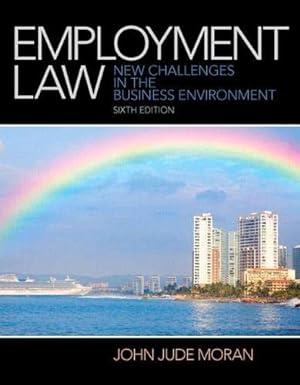Question
Background The laws relating to corporations are continually evolving. Judicial decisions, the changing needs of society, various parliamentary hearings and Treasury discussion papers have led
Background The laws relating to corporations are continually evolving. Judicial decisions, the changing needs of society, various parliamentary hearings and Treasury discussion papers have led to reforms being introduced to corporations law in Australia. In 1997, the Australian government introduced the Corporate Law Economic Reform Program (CLERP) which aimed to comprehensively improve Australia's business and company regulation. In 2000 when the CLERP Act 1999 came into effect (part of predecessor legislation to the Corporations Act; a part of the Corporations Law), the 'business judgment rule' s180(2) was introduced as a 'safe harbour' defence of s180(1). The Corporations Act 2001 (Cth) provides for other specific defences; for example against claims of insolvent trading. Section 588H of the Corporations Act contains a defence to insolvent trading under s 588G, but there has been ongoing discussion about the need for a business judgment style rule to be made available under s588G. The Treasury Discussion paper of 2010 Insolvent Trading: A Safe Harbour for Reorganisation Attempts Outside of External Administration, again raised for discussion the concept of a modified business judgment rule (a safe harbour defence) to be available to directors under s588G of the Corporations Act. The Australian Productivity Commission report Business Setup, Transfer and Closure, released in 2015, gave further consideration to implementing a safe harbour defence under s588G. In 2017 the Treasury Laws Amendment (2017 Enterprise Incentives No. 2) Bill 2017 - was introduced offering directors a defence to claims of insolvent trading under s588G. Subsequently, in 2018, the Corporations Act 2001 (Cth) was amended by introducing s588GA and related amendments to Division 3Director's duty to prevent insolvent trading (Division 3).
Tasks to be completed - Research and consider the reasons for the introduction of the safe harbour defence in s588GA and the effect of the 2018 amendments to Division 3 - Director's duty to prevent insolvent trading.
Answer the following questions. 1. Is the duty to prevent insolvent trading a fiduciary duty? Why or why not? You must give detailed reasons.
2. How does the safe harbour defence s588GA operate?
3. Who does it (s588GA) protect, and is this different to the business judgment rule s180 (2)? Give reasons.
4. Are there any restrictions on the operation of the s588GA defence? If so, what are they?
5. Do you think the changes to Division 3 will have an effect on the number of voluntary insolvencies in Australia in the future? Why or why not?
Part B (Listen to the podcast (or read the transcript) 'The talented Mr Daly ' which can be found at https://www.abc.net.au/radionational/programs/backgroundbriefing/updated-the-talented-mrdaly/10282810 Answer the following questions.
1. Did Mr Daly breach any directors' duties? If so, which ones and how?
2. Did any of the other directors breach their duties? If so, who, which duty and how?
3. Do you think the company was trading while insolvent? Give reasons.
4. If the company was trading while insolvent - are there any defences available to Mr Daly and/or other directors? If so, what are they? Give reasons.
5. Would the new 'safe harbour' defence assist the directors? If yes, how? If no, why not?
Hints: Consider using the free site Legify when searching for official versions of Australian legislation - remember not all versions of legislation available from the internet are up to date, accurate or official. https://legify.com.au
Consider using the free site Bills Digest - Australian Parliament when searching for Bills (and for Explanatory Memorandum) www.aph.gov.au
Consider using the free site Jade (or BarNet Jade) when searching for cases (and for cited paragraphs in cases that have established legal principles) https://jade.io
Remember Austlii is still useful as a means of searching for secondary sources, including journal https://www.austlii.edu.au and https://www.austlii.edu.au/lawcite/
Step by Step Solution
There are 3 Steps involved in it
Step: 1

Get Instant Access to Expert-Tailored Solutions
See step-by-step solutions with expert insights and AI powered tools for academic success
Step: 2

Step: 3

Ace Your Homework with AI
Get the answers you need in no time with our AI-driven, step-by-step assistance
Get Started


